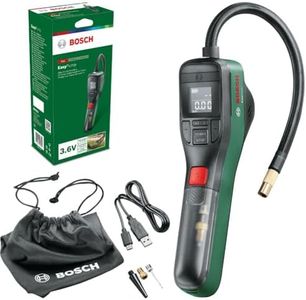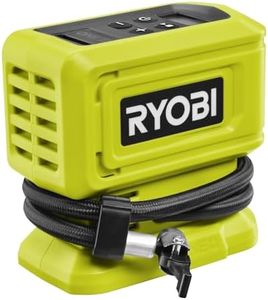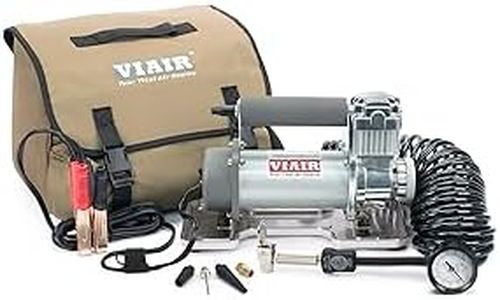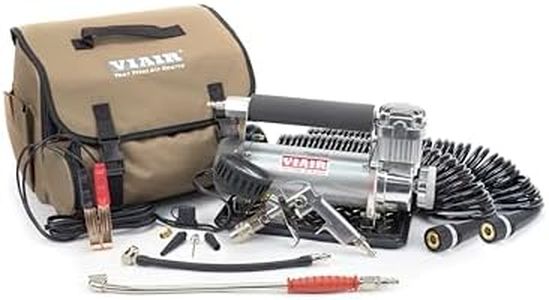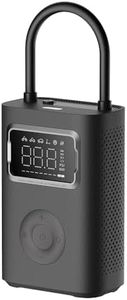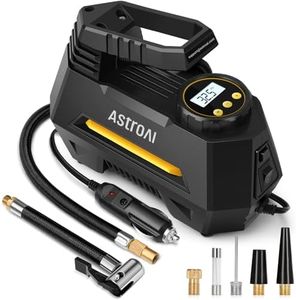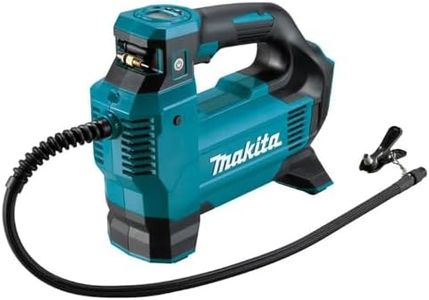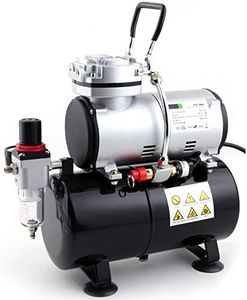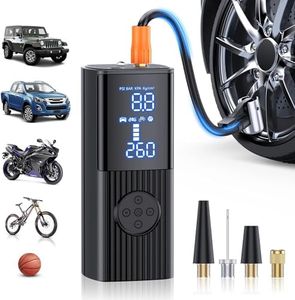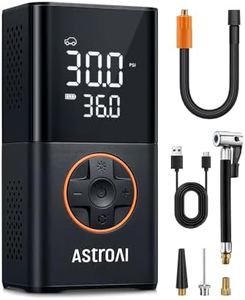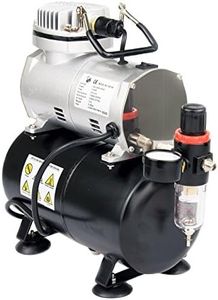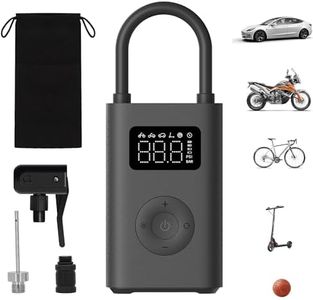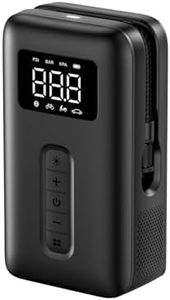We Use CookiesWe use cookies to enhance the security, performance,
functionality and for analytical and promotional activities. By continuing to browse this site you
are agreeing to our privacy policy
10 Best Portable Air Compressors
From leading brands and best sellers available on the web.Buying Guide for the Best Portable Air Compressors
Choosing a portable air compressor means considering what you’ll be using it for, how often you’ll be moving it, and the kind of tasks you want to accomplish. The best air compressor for you depends on whether you’re inflating tires, running tools, or handling larger projects. Focusing on key specifications can help you avoid getting overwhelmed by all the choices and ensure you get a compressor that’s just right for your needs.Tank Size (Gallons)Tank size refers to how much compressed air the unit can store at once, measured in gallons. This is important because a larger tank allows for longer operation before the compressor needs to run again and refill. Small tanks (1-3 gallons) are lightweight and great for quick jobs like inflating sports balls or bicycle tires. Medium tanks (4-6 gallons) handle things like powering nail guns, while large tanks (8 gallons or more) are best if you’re using air tools continuously. Think about whether you need long, uninterrupted air flow, or if you’ll only be using the compressor for a few minutes at a time, and choose your tank size accordingly.
Maximum PSI (Pounds per Square Inch)PSI tells you the pressure the compressor can deliver. Many tools, like impact wrenches or staple guns, require a specific PSI to work correctly. Lower PSI models (up to 100 PSI) handle most household and tire inflation tasks. Mid-range PSI (100-150 PSI) covers most portable air tool needs, while high PSI (over 150 PSI) is ideal for more demanding tasks or professional tools. Check the requirements of your tools or tasks and make sure the compressor can deliver enough PSI for them.
CFM (Cubic Feet per Minute)CFM measures how much air the compressor delivers per minute, which is crucial for running air tools. Tools like paint sprayers and impact wrenches need higher CFM to work smoothly, while inflating tires or cleaning doesn’t require as much. Low CFM (under 2.5) is sufficient for inflating or small tasks, mid-range CFM (2.5-5) is good for most household air tools, and high CFM (over 5) is needed for tools that require continuous air. Know the CFM requirements of your main tools and choose an air compressor that meets or exceeds those values.
Portability (Weight and Size)The whole idea of a portable air compressor is that you can move it around easily, so weight and size matter. Lightweight models (under 30 lbs) are easy to carry around the house or in your car. Medium weight models (30-60 lbs) may have wheels or handles and are good for moving on job sites. Heavy duty portable units (over 60 lbs) usually require wheels for transport, making them suitable for garage or professional environments. Consider how much you’ll be moving the compressor and where you’ll be using it to decide what size and weight will work for you.
Power Source (Electric or Gas)Air compressors can be powered by electricity or gasoline. Electric compressors are quieter, require minimal maintenance, and work well indoors or near power outlets. Gas-powered compressors are more powerful and ideal for outdoor use or locations where you don’t have easy access to electricity. If you’ll only ever use your compressor at home or where outlets are available, electric is the easy choice. For fieldwork or job sites without power, a gas-powered option offers more flexibility.
Noise LevelNoise level is how loud the compressor gets during operation, typically measured in decibels (dB). Quiet compressors (below 60 dB) are great for indoor or residential use, while louder models (above 80 dB) might be less suited to places where noise may bother others. If you value working in a quiet environment or live in a shared space, look for low-noise models.

